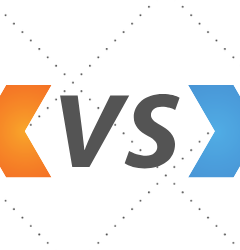desktop testing, Difference, Web Application Testing
Desktop Application Testing vs Web Application Testing
- By Chirag Jethwa
- No Comments
17 May

There are two basic types of software used to carry out operations on a computer system: desktop applications and web applications. Both have benefits and drawbacks, but there are many ways, including how they were developed, how they were used, and how accessible they were.
What are Web applications?
Web applications are software applications that run on a web server and can be accessed through a web browser.
Applications known as web applications can be using a web browser and executed on a web server. They require an internet connection to function and are developed using web technologies such as HTML, CSS, and JavaScript. The major advantage of web applications is that they are accessible from anywhere with an internet connection and a web browser, regardless of the device or operating system. This means that users do not need to download or install anything to use a web application.
Web Application Testing
Web application testing refers to the assessment of a software application accessed through a web browser to verify its functionality, usability, security, and performance. It involves conducting tests for browser compatibility, cross-platform adaptability, and evaluating security vulnerabilities and performance under varying user loads.
Web applications testing techniques
- Functional testing,
- Performance testing
- Security testing
- Usability testing
- Compatibility testing
What are Desktop applications?
Desktop applications are software applications that run on a personal computer or laptop.
Desktop applications, on the other hand, are programs that are installed and run locally on a computer system. They are developed using programming languages such as Java, C++, or C# and require an installation process to be used. Desktop applications can function without an internet connection, but they are limited to the device and operating system they were developed for. This means that if a user wants to access a desktop application on a different device or operating system, they need to download and install it again.
Desktop applications testing
Desktop application testing refers to the evaluation and verification of the functionality, usability, and performance of a software application installed and operated on a local computer. It involves ensuring compatibility with specific operating systems, validating the user interface, and verifying installation, configuration, and system resource utilization. The goal is to deliver a reliable and efficient desktop application that provides a seamless user experience.
Desktop applications testing techniques
- GUI testing,
- Compatibility testing
- Installation testing
- Functional testing
Difference between testing desktop applications and web applications
|
Desktop Application Testing |
Web Application Testing |
|
|
|
In conclusion, when it comes to desktop application testing and web application testing, QACraft recognizes the importance of tailoring the testing approach to the specific requirements of each application type. Desktop application testing focuses on operating system compatibility, user interface, and installation procedures, while web application testing emphasizes browser compatibility, cross-platform adaptability, and security/performance assessments.
Related Post
Categories
- Agile Testing
- Alpha Testing
- Android App Testing
- API Testing
- Automation Testing
- Banking Domain Testing
- Beta Testing
- cloud testing
- Corporate Life
- cross browser testing
- Cypress Testing
- desktop testing
- Difference
- Domain Testing
- E-commerce Website Testing
- E-learning App Testing
- End-To-End Testing
- Functional Testing
- Game Testing
- Healthcare Domain Testing
- Integration Testing
- Interview Questions
- ios App Testing
- Jenkins
- JIRA
- Katalon
- Manual Testing
- Mobile App Testing
- Monkey Testing
- Non-Functional testing
- Performance Testing
- Postman
- Regression Testing
- Salesforce Testing
- Sanity Testing
- security testing
- Selenium Testing
- Smoke Testing
- Software Testing
- Stability testing
- Static Testing
- Test Case
- Test Environments
- Test Scenario
- Test Script
- TestRigor
- Web Application Testing
© Copyright 2025 QACraft Pvt. Ltd. All rights reserved.
Contact : +91 9157786796



